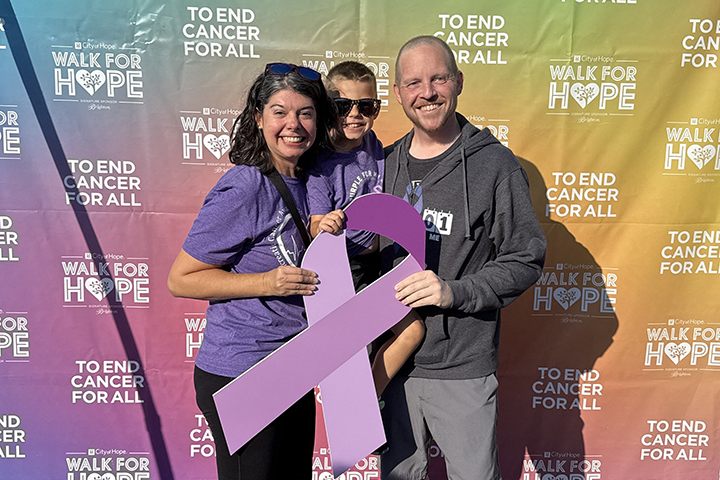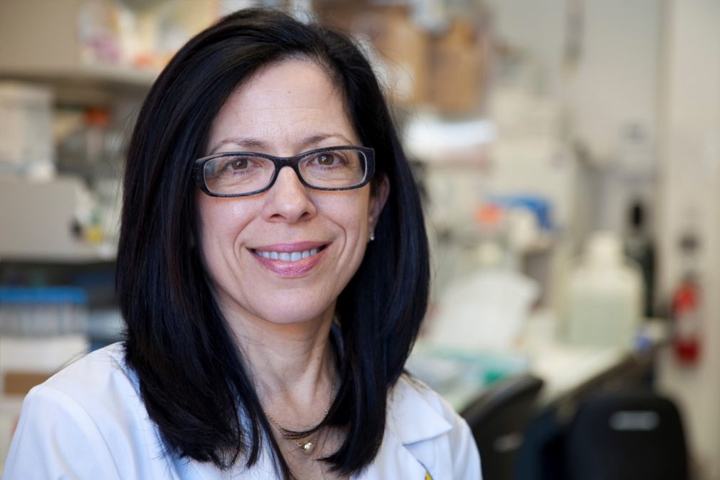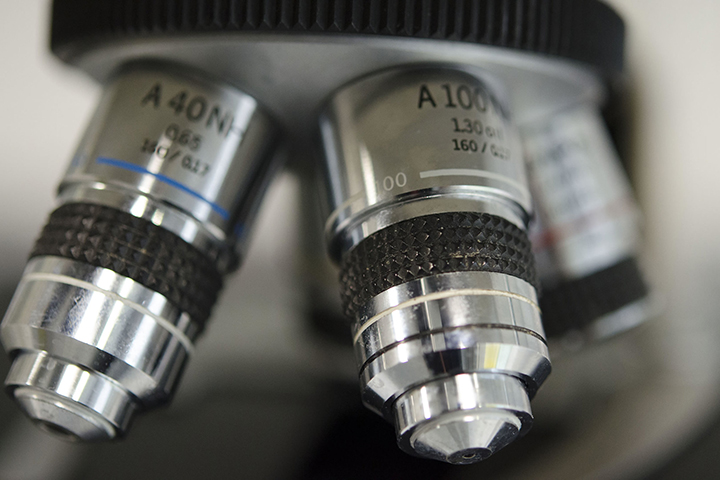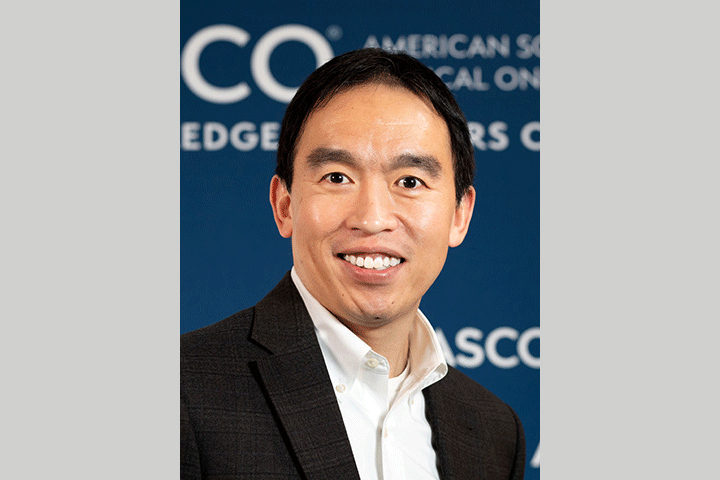AACR Special Conference Highlights Advances in Pancreatic Cancer Research

With survival rates hovering around 13 percent five years after diagnosis, the need for innovative and effective pancreatic cancer treatment remains critical.
The good news is the recent meeting of the AACR showed a dedicated global effort is underway not only to better understand pancreatic cancer but also to find ways to better treat this disease.
The 2024 AACR Special Conference in Cancer Research: Advances in Pancreatic Cancer Research brought together more than 600 experts—the largest group of attendees to date and the largest of the disease-specific AACR special conferences. More than 250 poster presentations and 51 oral presentations covered a range of topics, including cachexia, immunology and immunotherapy, the tumor microenvironment, and more. This year’s meeting also had a robust clinical focus, showing how research work translates into patient care.
There is a wealth of new work being performed in the labs and moving into clinical settings. An individualized approach to treatment is closer than ever—a major theme throughout the conference. As always, Let’s Win will give you a brief taste of several of the presentations and we will cover more AACR findings in depth in the coming months.
Cachexia, Diet, and Metabolism
Teresa Zimmers, Ph.D., of Oregon Health & Science University Knight Cancer Institute in Portland, Oregon, presented a review of preclinical research into inflammation and cachexia. This research implicated the cytokine IL-6 as a potential target to reduce cachexia. Research shows that cachexia contributes more to mortality at lower disease stages and that expression of IL-6 is sufficient to induce cachexia in mice. Blocking IL-6 prevents cachexia from developing in mice.
Zimmer reported findings of a randomized phase II trial testing the efficacy of gemcitabine/nab-paclitaxel (gem/nab) with or without tocilizumab (toc), as first-line treatment in patients with locally advanced or metastatic pancreatic cancer. In patients with advanced disease, the addition of tocilizumab to gem/nab did not result in improved overall survival rate at 6 months. Although more patients were alive at 18 months in the gem/nab/toc arm, long-term survival rates exceeding 24 months were not different between groups.
In cachexia endpoints, there was no difference in weight loss at two or four months, but muscle loss was prevented with tocilizumab compared to placebo. There was an increase in the proportion of patients who gained or had stable muscle mass. There was no change in adipose loss. This trial provides evidence that IL-6 can mediate muscle loss and provides an opportunity to continue to look for markers of response to therapy and to identify additional targets.
Andrew Hendifar, M.D., of Cedars-Sinai Medical Center, Los Angeles, California, reviewed several trials focused on pancreatic cancer and cachexia. Among the most promising is a study showing that three doses of a drug called ponsegromab compared to placebo in 187 people with non-small cell, pancreatic, or colorectal cancer and elevated serum GDF-15 concentrations. Almost three-quarters of participants had stage IV cancer.
After receiving a subcutaneous injection once every four weeks for 12 weeks, patients on the high dose had gained 3 kg more in body weight than their counterparts on placebo. Placebo-adjusted weight increases of 1.33 kg and 2.08 kg, respectively, at the low and middle dose were also shown. Patients on all doses of ponsegromab outperformed the placebo group from the fourth week of the trial.
The percentage of weight gain on ponsegromab compared to placebo ranged from 2.02% at the low dose to 5.61% at the high dose. Associated moderate improvements in appetite and cachexia symptoms and increased physical activity were also observed in ponsegromab-treated patients, relative to placebo. At the high dose, there were significant improvements on measures of anorexia and activity, as well as in skeletal muscle.
Immunology and Immunotherapy
Jashodeep Datta, M.D., of the University of Miami Miller School of Medicine (Florida), presented work showing how the central regulator of treatment resistance in pancreatic cancer is neutrophil-derived TNF signaling. Immature neutrophils are the earliest sentinels in a developing pancreatic cancer. The research connects the molecular dots between the high-risk tumor genotypes that exist in pancreatic cancer and the specific molecular and cellular culprits—the immature neutrophils—that are involved in creating immunosuppressive networks in the pancreatic tumor microenvironment.
Gurcan Gunaydin, M.D., Ph.D., of Dana-Farber Cancer Institute, Boston, Massachusetts, showcased work on how to overcome the fact that pancreatic cancer has a low-to-intermediate mutational burden. And how efforts are underway to broaden the landscape of targetable antigens. In the work presented, researchers leveraged twelve pancreatic cancer patient-derived organoids to purify and enrich the malignant compartment from low tumor cellularity tumor specimens. The organoids were subjected to extensive genomic and transcriptomic profiling to enable mutation calling and HLA typing, among other highly technical work. The researchers showed that cryptic epitopes, arising from aberrant translation in pancreatic cancer, represent a particularly promising class of antigens for next-generation immune-based therapies.
Stroma and Tumor Microenvironment
David DeNardo, Ph.D., of the Washington University School of Medicine in St. Louis, Missouri, explained how therapeutic resistance is largely attributed to a unique tumor microenvironment embedded with an abundance of cancer-associated fibroblasts (CAFs). Distinct CAF populations were recently identified, but the phenotypic drivers and specific impact of CAF heterogeneity remain unclear. In the study presented, researchers identified a subpopulation of senescent myofibroblastic CAFs (senCAFs) in mouse and human pancreatic cancers. These senCAFs are a phenotypically distinct subset of myofibroblastic CAFs that localize near tumor ducts and accumulate with pancreatic cancer progression. Depletion of senescent stromal cells in genetic and pharmacologic pancreatic cancer models relieved immune suppression by macrophages, delayed tumor progression, and increased responsiveness to chemotherapy. The findings demonstrate that senCAFs promote disease progression and immune cell dysfunction.
Max Wattenberg, M.D., of the University of Pennsylvania Perelman School of Medicine, Philadelphia, Pennsylvania, showcased work combining two treatments that activate myeloid cells and how this combination may effectively treat pancreatic cancer. He found that the combined targeting of the myeloid cell-activating receptors CD40 and Dectin-1 can unleash potent antitumor immunity. Myeloid cells in solid tumors expressed activation receptors including the pattern recognition receptor Dectin-1 and the TNF receptor superfamily member CD40. In mouse models of checkpoint inhibitor-resistant pancreatic cancer, co-activation of Dectin-1, via systemic β-glucan therapy, and CD40, with agonist antibody treatment, eradicated established tumors. Launching a dual-pronged approach underscores myeloid cells’ potential as potent cancer fighters, especially against a particularly resistant tumor type that failed to respond to the single therapy approach.
RAS Drugs
The emerging anti-RAS drugs were a huge focus of the meeting, with two plenary sessions and a debate devoted to the topic. Let’s Win has covered much of this research, and while clinical data continues to look promising, resistance remains a challenge. Fortunately, there is a robust effort underway to understand the various mechanisms of resistance in play in hopes of identifying better combination approaches.
Of particular interest was an update provided by Mallika Singh, Ph.D., of Revolution Medicines, Redwood City, California, on the investigational drug RMC-6236. This is the first targeted investigational drug designed to directly inhibit all major forms of oncogenic RAS, the major drivers of pancreatic cancer. It has shown antitumor activity and a favorable safety profile in a broad population of patients with previously treated pancreatic cancer. A phase III trial is planned.
Personalized Approaches and Subtypes
Grainne O’Kane, M.D., of Princess Margaret Cancer Centre, Toronto, Ontario, Canada, presented an update on clinical and mechanistic data from the PASS-01 trial. The researchers continue to see consistent differences in overall survival between the FOLFIRINOX (FFX) cohort and the gemcitabine/nab-paclitaxel cohort (GnP). At this point, there is better overall survival with the GnP group. Molecular profiling data is available for 90% of patients, which allows researchers to look at subgroups and predictors of response. What they have found is the basal-like subgroup is the most predictive prognostic variable, with worse outcomes. This group responded poorly to FFX. Epidemiological risks, such as smoking and obesity among others, are not associated with basal or classical subtypes. All Black and African-American patients in the cohort had KRAS mutations.
A study by Nicholas Woods, Ph.D., of the University of Nebraska Medical Center, Omaha, Nebraska, in collaboration with Jose G. Trevino, II, M.D., Surgeon-in-Chief at VCU Massey Cancer Center in Richmond, Virginia, focused on pancreatic cancer subtypes from minority patients. To identify molecular features that may contribute to racial health disparities in pancreatic cancer, the researchers used quantitative mass spectrometry to determine the proteomic signatures unique to tumor racial origin in a cohort of nine Black and 29 white patients. This analysis of the bulk tumor proteome revealed 183 proteins were differentially expressed between these groups. The protein with the highest expression in tumors from Black patients relative to white patients was Ring Finger Protein 2 (RNF2). This protein acts as an epigenetic transcriptional repressor in developmental processes pertaining to cellular differentiation. It is also associated with poorer outcomes. Black patients have higher basal type higher inflammatory subtypes, which may contribute to worse outcomes. Massey researchers have a five-year multidisciplinary grant dubbed United for Health Equity – Living PDX Program (U4HELPP) that aims to develop more than 500 new patient-derived cancer models, with a focus on underrepresented populations with breast and pancreatic cancers.







